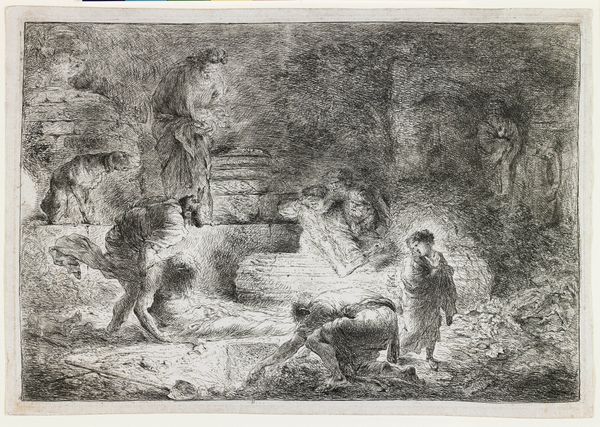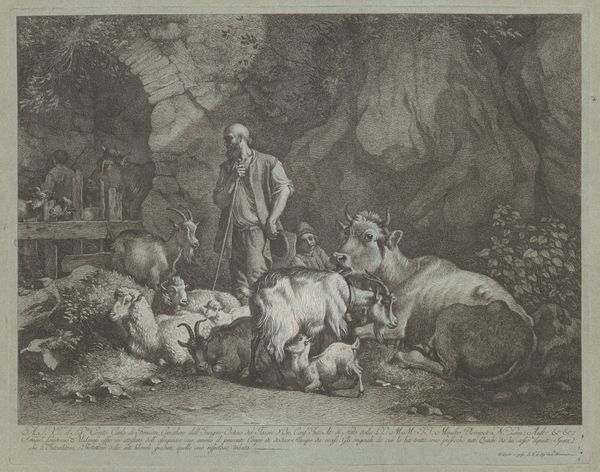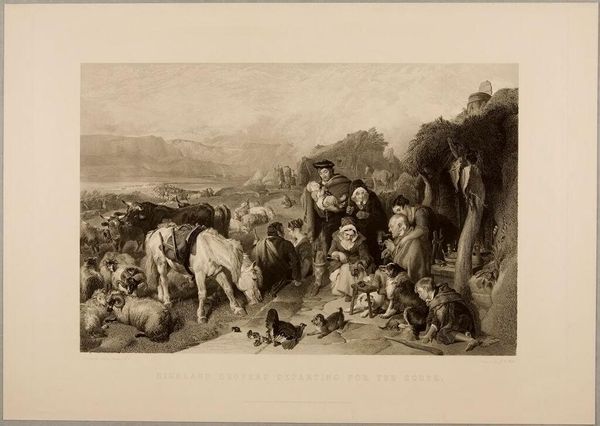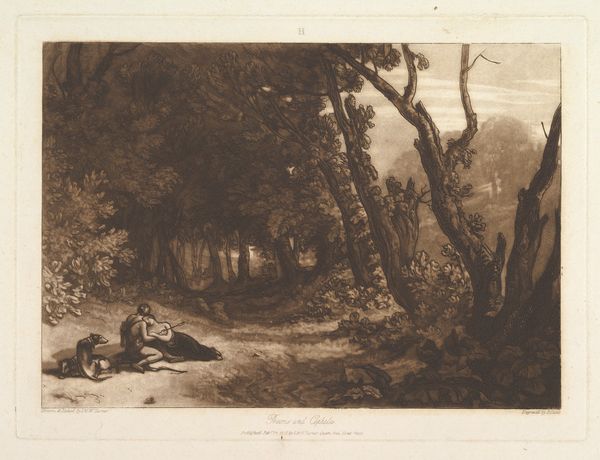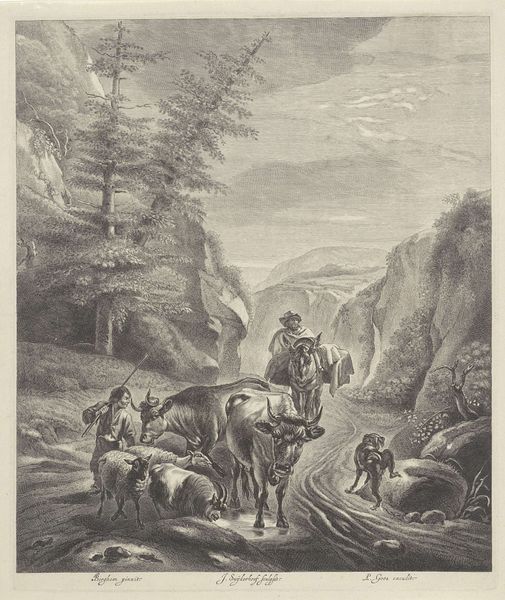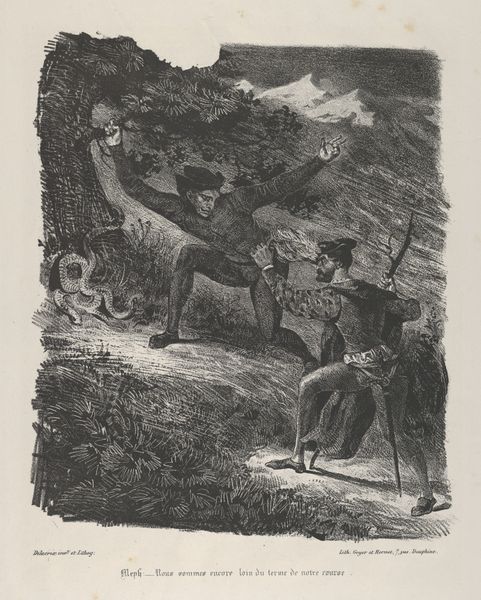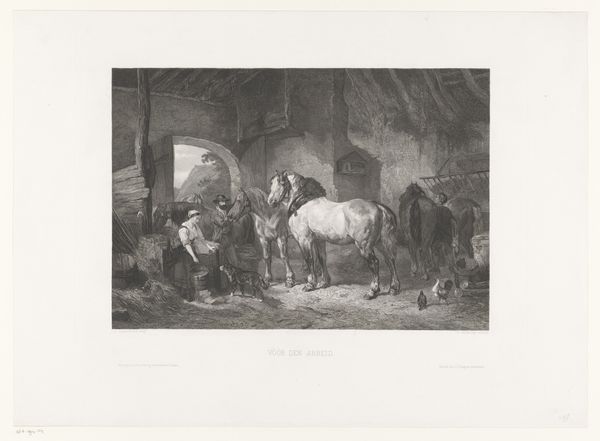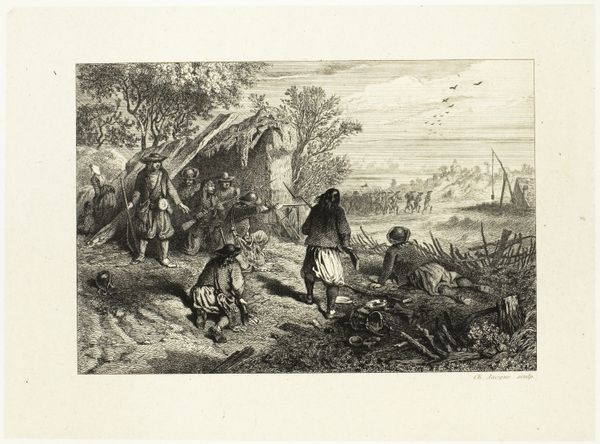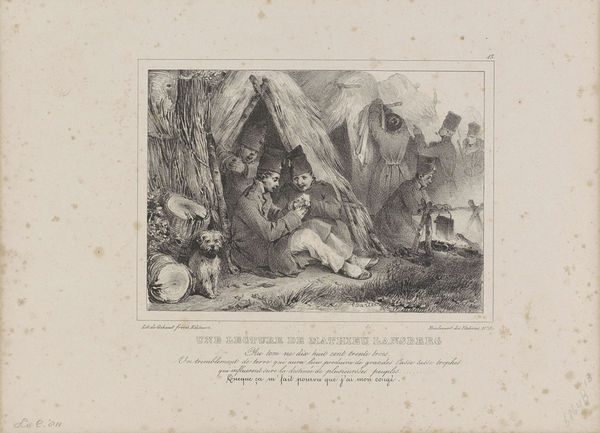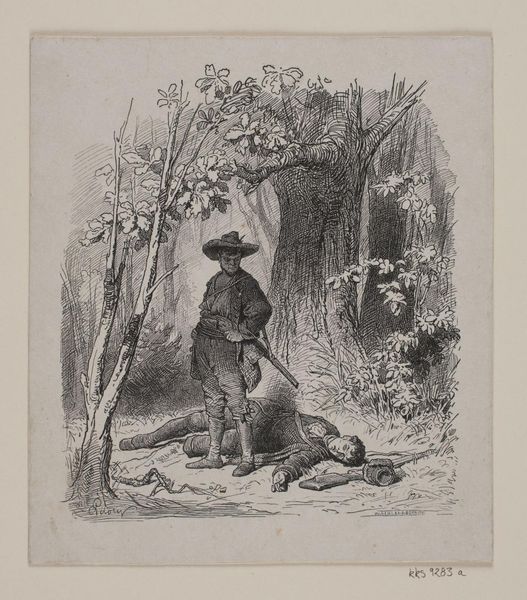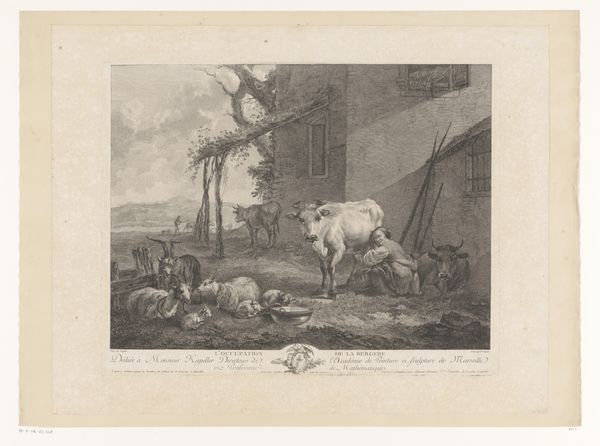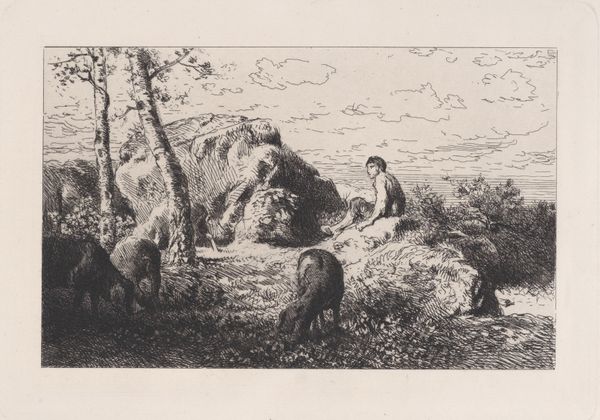
Dimensions: image: 21.4 x 30.2 cm (8 7/16 x 11 7/8 in.) sheet: 28.9 x 40.4 cm (11 3/8 x 15 7/8 in.)
Copyright: National Gallery of Art: CC0 1.0
Curator: Here we have "Las Bodas de Camacho," a captivating print created circa 1855 by Célestin Nanteuil. The work is an engraving, employing both etching and ink, presenting a rich tableau of rustic life. Editor: My first thought? There’s such a stark contrast here. An opulent banquet setup seems to contrast sharply with the figures preparing the food; it's a rather strange feeling. Curator: That contrast speaks volumes. The piece draws from an episode in Cervantes' "Don Quixote," and Nanteuil masterfully visualizes the dichotomy between the wealthy Camacho's extravagant wedding and the labor needed to sustain it. Note how the artist uses composition to visually separate these two realms of experience. Editor: So, it's not just a simple genre scene but a commentary on social class, wouldn't you say? I'm thinking about who benefits and who toils here; the unglamorous side of feasts is so pronounced here! The slumped figure, so burdened. Curator: Precisely! Nanteuil uses the romantic landscape and figuration style to elevate what would be considered genre painting. It is worth examining the impact of social and political climates on depictions of work and leisure. The artwork almost challenges the idyllic pastoral views so commonly presented during this period. Editor: That's powerful. This image certainly disrupts any romanticized view of rustic life. I am thinking particularly about this tired person preparing the banquet on one side, and then this scene with many standing spectators. They're separated by trees, but still clearly meant to be viewed as part of the same story. Curator: And it underscores the crucial question: who is represented in the making of art and for whom is the work made? Romanticism was very often supported by the bourgeois to reflect certain values back to them. Editor: And in a post-French Revolution Europe, those depictions carried so much ideological weight! This makes the print far more politically charged than initially meets the eye. This print reminds us to question representations of labor. Curator: Yes, and "Las Bodas de Camacho" offers that insight; this allows us to re-think the relationship between the artwork, and public perception about political agency and imagery of common people at work. Editor: It definitely does—the piece urges a more inclusive vision and awareness of existing power dynamics in that epoch. I will be rethinking my assumptions about romanticized notions of rustic charm.
Comments
No comments
Be the first to comment and join the conversation on the ultimate creative platform.

